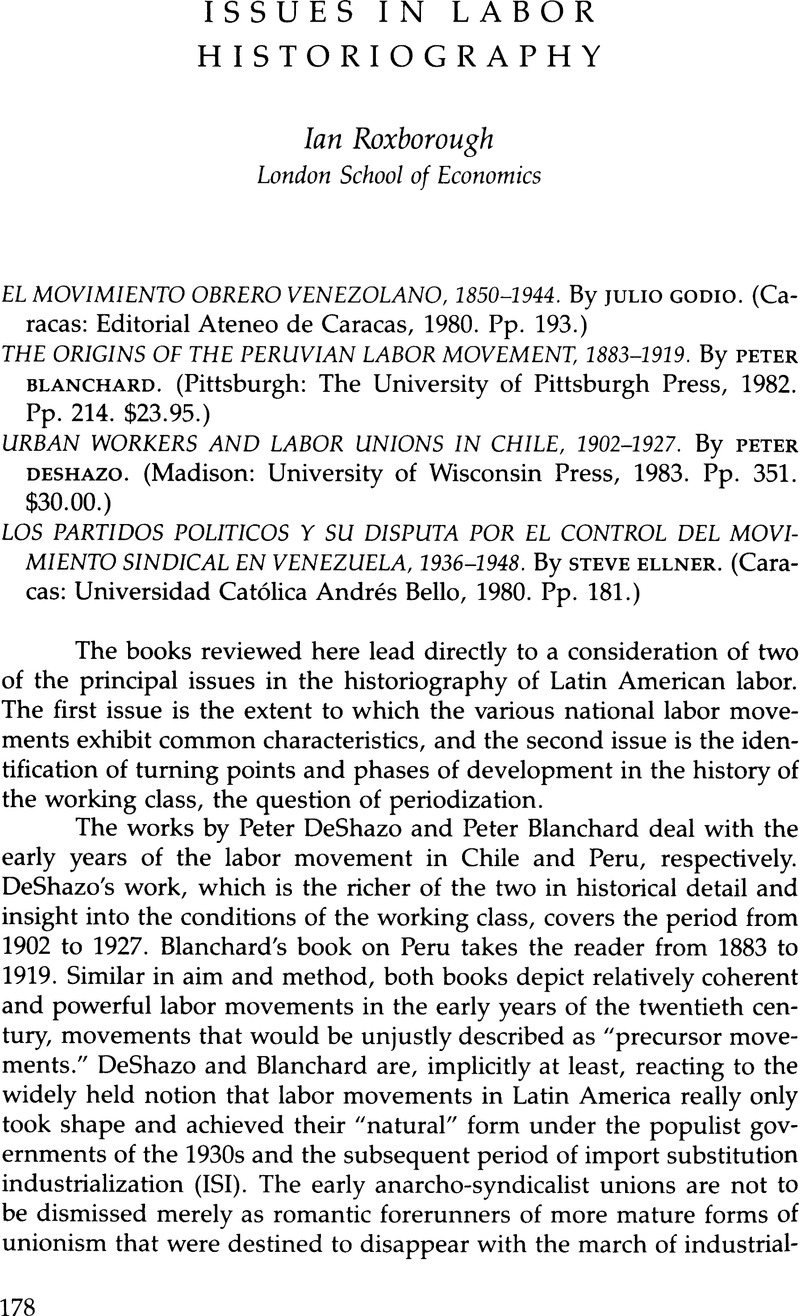Article contents
Issues in Labor Historiography
Review products
Published online by Cambridge University Press: 12 October 2022
Abstract

- Type
- Review Essays
- Information
- Copyright
- Copyright © 1986 by the University of Texas Press
References
Notes
1. See also B. Fausto, Trabalho Urbano e Conflito Social (Rio de Janeiro: Difusão Editorial [DIFEL], 1977), for a similar analysis of the Brazilian labor force.
2. See, for example, M. Coniff, Urban Politics in Brazil: The Rise of Populism, 1925–1945 (Pittsburgh: University of Pittsburgh Press, 1981).
3. I. Roxborough, “Unity and Diversity in Latin American History,” Journal of Latin American Studies 16, no. 1 (1984):1–16.
4. P. DeShazo, “The Valparaiso Maritime Strike of 1903,” Journal of Latin American Studies 11, no. 1 (1979):145–68.
5. That Argentina should be an exception to this general pattern is more apparent than real. The fact that the U.S. Embassy had identified Perón with the Axis bloc in the 1940s and had unsuccessfully attempted to intervene against him in the 1946 elections gave a radically different cast to union-state relations in Argentina. Amongst other factors, diplomatic tensions between the United States and Argentina placed an obstacle in the path of U.S. influence over labor union developments in this period.
6. I am indebted to my colleagues of the history seminar entitled “Labor between the Second World War and the Cold War,” at the Institute for Latin American Studies in London, and in particular to Leslie Bethell, for a series of stimulating discussions on these questions.
7. K. P. Erickson, P. V. Peppe, and H. A. Spalding, Jr., “Research on the Urban Working Class in Argentia, Brazil, and Chile: What Is Left to Be Done?,” LARR 9, no. 2 (1974):115–42.
- 2
- Cited by




